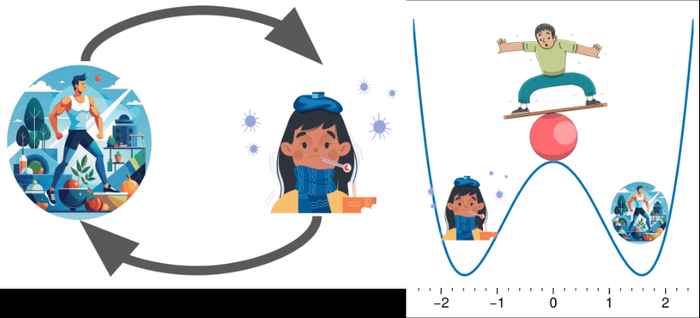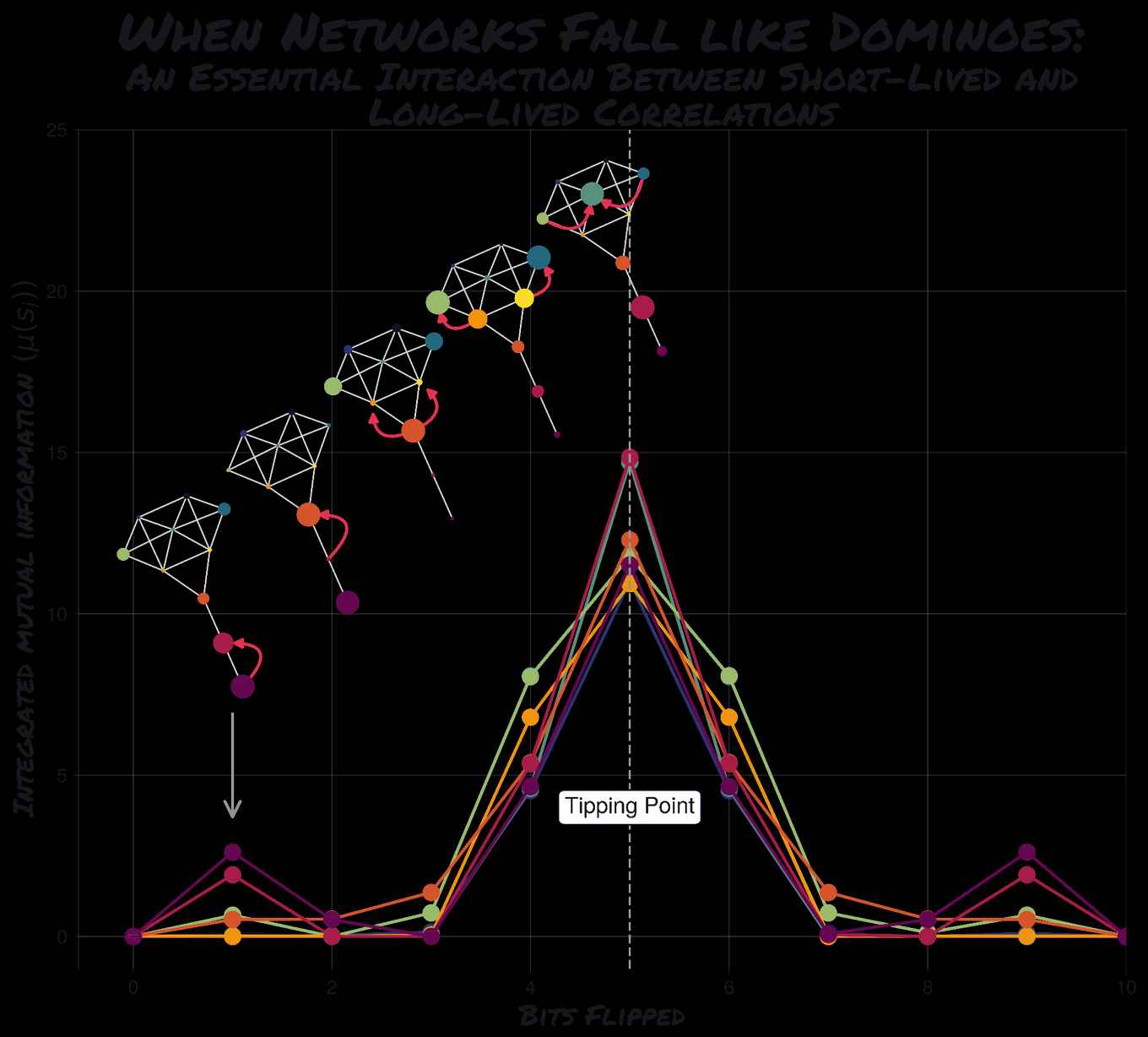How Small Sparks Can Create Large Flames
17 February 2025
The research results of Casper van Elteren, Rick Quax, and Peter Sloot of the Computational Science Lab (CSL) of the Informatics Institute, were published and made the cover of the scientific journal Entropy.
These sudden transformations surround us - from financial markets crashing to ecosystems shifting their balance. While they might seem unpredictable at first glance, their research reveals that these changes follow surprisingly similar patterns. By understanding these patterns, they can better anticipate and even guide how systems transform.

The Domino Effect in Our World
Think of society like a giant game of dominoes. When one piece falls, it can trigger others to follow – but some dominoes are more important than others. They discovered that in any complex system – whether it's social media, disease outbreaks, or climate change – there are special 'trigger points' that can start these chain reactions and others that help lock in the changes.
Networks: The Hidden Web of Everything
Imagine a spider's web where each intersection represents something important - it could be a person in a social group, a species in an ecosystem, or a step in a complex process. These webs, which scientists call networks, are everywhere in our world. In social networks, each point represents a person, with connections showing friendships or interactions. In disease networks, these points might be individuals who can infect each other, while in environmental networks, they could represent different species or environmental factors connected by their influences on each other.
These networks aren't static - they're constantly changing, like a dance where each participant influences others' moves. Understanding how these networks change and adapt helps us predict everything from viral trends to disease outbreaks.
How Networks Reach Their Tipping Point
Think of a peaceful crowd that suddenly turns into a protest. What makes that crucial moment happen? Their research shows it's not random, but follows a distinct pattern. It starts with a build-up, where small changes begin occurring in less connected parts of the network. Then comes the spark - the key trigger points pick up these small changes and amplify them. Like a wave, these changes flow through the network, gaining momentum until they reach what they call "Anchor" points that help cement the new state.
The researchers can see this pattern in real-world social movements. It often begins with quiet discussions on social media, until an influential voice amplifies the message. As the idea spreads through various communities, major organizations and leaders step in to transform a moment into a movement. This same pattern appears in everything from market crashes to ecosystem changes - small shifts building up until they reach key points that trigger widespread transformation.

Meet the Game-Changers
They found two key players in this drama:
- The Spark Plugs (technically called "initiator nodes"): These are like the first domino in the chain. Think of them as the first person to share a viral video or the first case in a disease outbreak.
- The Anchors (technically called "stabilizer nodes"): These are like the foundation pieces that help cement new changes. In social movements, these might be influential leaders or organizations that turn a viral moment into lasting change.
Why This Matters and What Lies Ahead
Understanding these patterns gives us powerful tools to navigate our complex world. By identifying early warning signs, we can better anticipate everything from disease outbreaks to social movements and environmental tipping points. This knowledge helps us build more resilient communities and ecosystems while preventing unwanted disruptions to our systems.
This research opens new doors for positive change. Whether it's strengthening our healthcare systems against future pandemics, supporting beneficial social transformations, or protecting our environment, these insights help us work with the natural patterns of change rather than against them. As we face increasingly complex global challenges, understanding how small changes can lead to big transformations becomes more crucial than ever.
More research information
Curious to learn more? The complete research was highlighted in a special commemorative issue of the scientific journal Entropy, celebrating the legacy of physics pioneer Ludwig Boltzmann. This work, published in December 2024, was made possible through funding from the Dutch National Police's Hyperion grant program.
Cascades Towards Noise-Induced Transitions on Networks Revealed Using Information Flows
This article is writen by Casper van Elteren.